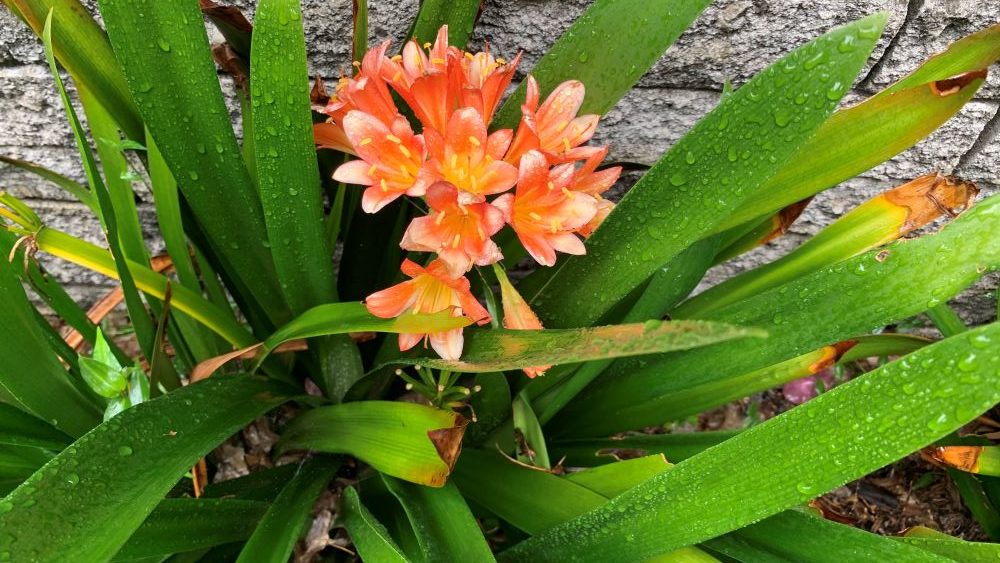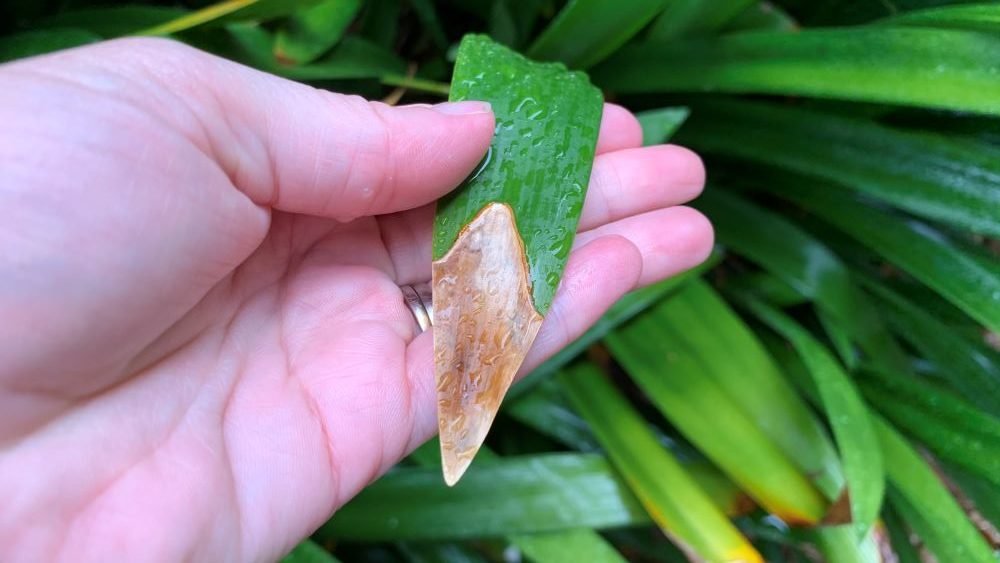Clivias can suffer sunburn particular in spring and summer if their leaves are exposed to full afternoon sun. The leaves will turn brown and yellow on the tip and will star to die back. The rest of the leaf can stay green but you can remove the damage leaves to tidy up the plant. Clivias will grow new leaves to replace them from the center of the plant.
Clivias are tough plants and recover quickly from sunburn with the right care. This article will explore what sunburn looks like on clivia plants and what to do to help plants to recover.

What a sunburnt clivia looks like
There are a few signs to look out for to know that clivias have been sunburnt. Here are the top 3 signs that clivias leaves have suffered from too much sun and have burnt.
1. Brown leaf tips
Brown leaf tips are a sign that clivia leaves have suffered from burn. They become brown and crispy on the ends and even on the edges of the leaves. Strong afternoon sun will usually cause this damage in spring and summer when the sun is higher in the sky.
Clivia plants that were shaded in the cooler months or exposed to less sun can get a sudden burst of sun when spring arrives causing burn.

2. Yellowing on the leaf
Yellowing on the areas that were exposed to sun are a key sign that it has suffered from burn. This usually occurs on the outer leaves that are getting the most sun or the tallest leaves.
The yellowing can often extend to browning on the leaf edges and tips. Once the leaf has turned yellow it will generally not recover. The leaf can be removed to tidy up the plant. If you can move the plant, it is best to do so and transplant it to a protected area. Water the plant well to help it recover and grow new leaves.

3. Leaves will dry up
Once leaf burn has become more extensive the whole leaf can turn yellow and then brown and dry up. The leaf will shrivel up and die off. You can trim the leaf off at the base of the plant.

Top 5 ways to help clivias recover from sunburn
Here are my top 5 tips to help clivias to recover from sunburn. If the plant is showing signs that it has suffered burn, these tips will help the plant to grow new leaves to replace them.
1. Trim off damaged leaves
The first step to help clivias recover from sunburn is to trim off damaged leaves. This will tidy up the plant and allow more room for new leaves to grow. Damaged leaves are more likely to be attacked by pests or fungus so it is best to remove them.
Use sharp, clean secateurs to trim them off as close to the base of the plant as possible. If the leaves are not affected by disease, they can be added to your compost bin to break down.
This is also a good opportunity to check the plant and trim off any old flowers. This will help the plant to focus its energy on growing new flowers and leaves rather than forming seed pods.
2.Water deeply
The next step to help clivias recover from sunburn is to water them deeply. For outdoor clivias, use your hose to thoroughly wet the soil around the root base of the plant. Repeat this each week for 3 weeks to encourage new growth.
3. Add pelleted chicken manure
Add a handful of pelleted chicken manure to the base of the clivia plant to help it to grow and recover. It is ideal to fertilize the plant in spring to replace nutrients that were used up during winter flowering. Water the fertilizer in well to allow it to begin to release into the soil.
Pelleted chicken manure will help to encourage new leaf growth as it contains a good amount of nitrogen.
4. Add some seaweed solution
Help the roots of the clivia plant to grow strong and grow new leaves by watering on some seaweed solution. Dilute the solution into a watering can and water it on the leaves and roots of the plant. This can be added monthly in spring and summer to help the plant recover.
5. Move the plant into shade
The final step to help to prevent future burn and help the plant recover is to provide it with more shade. Clivias can be dug up and divided and moved to a new position that gets afternoon shade. Potted clivias can be moved into a shade house or under a verandah.
Best position for clivias to avoid sunburn
Avoiding sunburn is the best way to protect clivia plants. They grow best in dappled light and protection from afternoon sun. Place them in a position that gets a small amount of morning light and are shaded by a nearby tree, shade house or verandah in the afternoon.
How much sun clivias can take
Clivas can grow well with 3-4 hours of morning sun and protection in the afternoon. If you live in a very hot, dry area they may need further protection from the sun in the morning during the summer. In tropical and sub-tropical areas they will thrive in dappled light under a tree.
Sunburnt Clivias | Summary
Clivias can recover from sunburn if they are protected from afternoon sun, watered well, fed with some pelleted chicken manure and the damaged leaves are removed. Seaweed solution will help the roots and leaves to grow strong. Clivias will recover within 2-3 weeks growing new leaves from the center of the plant.
Happy growing.
Clivias
- Orange flowering clivia leaves turning yellow | Top 5 Causes and Solutions
- Are clivia roots invasive? | Should you plant them near your house?
- Best fertilizer for Clivia Plants | Winter, Spring and Summer
- Do clivias multiply? | How to get more clivias for FREE
- Yellow leaves on Clivias | Problem solved
- What to do with Clivia Plants after Flowering | Easy Pruning Tips
- Sunburnt Clivias | 5 Ways to Help Plants Recover
- Why Clivias Stop Flowering | How to Encourage More Blooms
I am an accredited practicing dietitian, experienced gardener and a dedicated cook. I love writing and sharing my experience so you can learn from my successes and mistakes.
